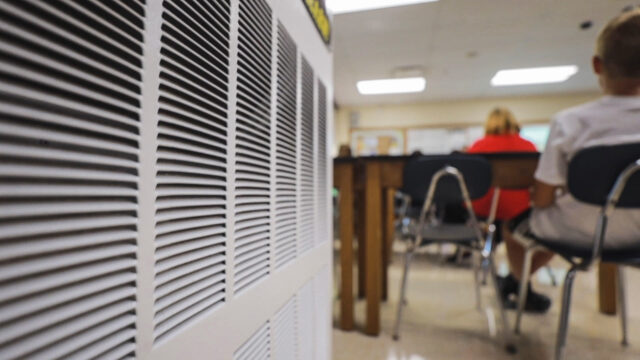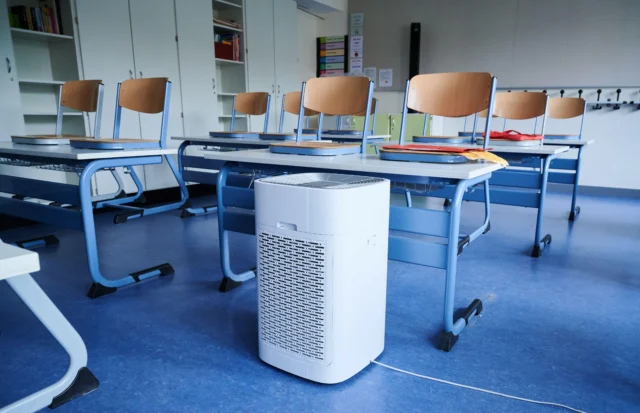
Air safety in schools is of paramount importance for ensuring the well-being of students, educators, and staff. Not only is good air quality conducive to physical health, but it also promotes cognitive functioning and concentration.
The introduction of innovative strategies to enhance air safety is a testament to the evolving measures schools are taking to address this crucial concern. In this blog post, we’ll delve into the depths of how schools in the USA are taking strides in this direction, from advanced ventilation systems to green building initiatives.
The Significance of Air Safety in Schools
The connection between air quality and student performance is well-established. Prolonged exposure to poor indoor air quality can lead to a range of health issues, from allergies, and respiratory ailments to cognitive deficits. Schools, often densely populated and bustling with activity, are susceptible to various quality challenges — mold, pollutants from outdoor sources, and inadequate ventilation to name a few. Addressing these challenges head-on is imperative for creating a conducive learning environment.
Integration of Advanced Ventilation Systems

Many schools across the USA have recognized the need to go beyond conventional ventilation methods. Integration of advanced ventilation systems ensures that stale, contaminated indoor air is efficiently replaced with fresh outdoor air. These systems, equipped with energy recovery components, not only improve their quality but also enhance energy efficiency. They maintain optimal temperature and humidity levels, making classrooms comfortable while minimizing energy consumption.
Regular HVAC Maintenance and Upgrades
A well-maintained Heating, Ventilation, and Air Conditioning (HVAC) system is a linchpin for air safety. Schools are investing in regular maintenance schedules to ensure these systems run smoothly, devoid of common issues like leaks or blockages. Additionally, embracing modern HVAC technology, which often incorporates more efficient filters and advanced sensors, proves pivotal in bolstering indoor gas quality and safety.
Air Quality Monitoring
Knowledge is power. By integrating air quality monitoring systems in the form of a detector or even a vape alarm, schools gain access to real-time data about indoor pollutants, temperature, and humidity. This constant feedback loop allows them to react promptly, making necessary adjustments to maintain optimal conditions. Moreover, with the advent of IoT (Internet of Things), these monitoring systems can even be integrated with HVAC systems, enabling automated adjustments.
Filtration and Purification Technologies

In recent years, there’s been a remarkable evolution in filtration and purification technologies tailored for educational environments. Schools are extensively adopting HEPA (High-Efficiency Particulate Air) filters, which are proficient in capturing even the tiniest particles, including harmful viruses. These filters act as the first line of defense against airborne threats.
Adding to this, the integration of UV-C light purification provides another layer of protection. This method is potent, targeting and deactivating the DNA of bacteria, viruses, and other menacing pathogens. By combining these technologies, schools ensure that the gas students and staff breathe is of the highest quality possible, enhancing the overall learning environment.
Education and Awareness Programs
Air safety goes beyond mere infrastructure, delving deeply into the realms of knowledge and awareness. Recognizing this, schools are no longer passive but proactively spearheading initiatives to inform students and staff about the profound importance of maintaining pristine air quality. These educational endeavors range from interactive workshops to insightful seminars and dedicated learning modules.
By embedding the significance of safety within the curriculum, schools are nurturing a generation that is both aware of and values the importance of clean air. This holistic approach ensures a collective responsibility, where everyone from the student to the educator plays an integral role in fostering air safety.
Green Building Initiatives
The architectural design of schools is undergoing a green revolution. As the impacts of climate change become more evident, there’s a palpable shift towards sustainable and environmentally-friendly building practices. Through energy-efficient designs, schools are not merely curbing energy consumption but actively contributing to a healthier planet.
Integrative features like green roofs offer insulation, reduce stormwater runoff, and provide aesthetic appeal. Solar chimneys, on the other hand, optimize natural ventilation, and strategic building orientations maximize daylight use. These innovative designs not only contribute to a reduced carbon footprint but also significantly uplift the indoor air quality for students and staff.
Outdoor Air Quality Management

While indoor air quality is undeniably crucial, the external environment surrounding schools holds equal significance. Recognizing this, schools are implementing comprehensive strategies to enhance outdoor air quality. This endeavor entails initiatives like afforestation drives, where they plant native trees that act as natural air purifiers.
Furthermore, by creating green barriers, schools effectively block the ingress of pollutants. Collaborations with local authorities are also on the rise, aiming to regulate traffic during peak school hours. Such coordinated efforts aim to minimize the harmful exhaust emissions in proximity to schools, safeguarding students from potential respiratory hazards.
Case Studies of Air Safety Innovations
Across the USA, many schools have emerged as pioneers in air safety. A standout example is the ‘Clear Skies Initiative’ undertaken by a Californian school district. Their comprehensive approach encompassed the adoption of real-time air quality monitoring systems, the latest in filtration technology, and thorough HVAC system overhauls.
These concerted efforts bore tangible results, with the district observing a marked decline in respiratory ailments among students. Additionally, there was a discernible uptick in overall student performance, validating the deep-seated connection between its quality and cognitive function.
Challenges and Future Trends
The journey towards pristine air quality in schools isn’t without hurdles. Despite significant strides, schools grapple with challenges ranging from budgetary constraints, which limit technological adoption, to existing outdated infrastructures that resist modern upgrades. Coupled with this, there’s a pressing need to amplify awareness campaigns to garner community support.
Nevertheless, the horizon is rife with promise. The next wave of innovation hints at AI-driven air management systems that adjust in real time. There’s also a budding interest in biophilic design principles, which emphasize a profound connection with nature, and community-led safety programs that harness collective strength for cleaner air.
Conclusion
Ensuring top-notch air quality in schools is not just a matter of compliance but a testament to the commitment to nurturing future generations. The multifaceted approaches schools in the USA are adopting underscore the significance of this mission. As technology advances and our understanding of air safety deepens, the horizon looks clearer and more promising.









